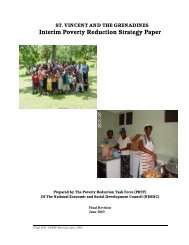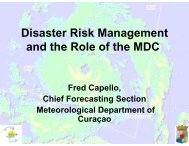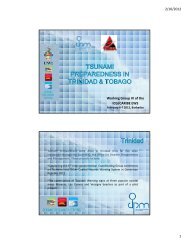The Anatomy of A Silent Crisis The Anatomy of A Silent Crisis
The Anatomy of A Silent Crisis The Anatomy of A Silent Crisis
The Anatomy of A Silent Crisis The Anatomy of A Silent Crisis
- TAGS
- anatomy
- www.bb.undp.org
Create successful ePaper yourself
Turn your PDF publications into a flip-book with our unique Google optimized e-Paper software.
Case Study<br />
44 Forum 2009: Climate Change – <strong>The</strong> <strong>Anatomy</strong> <strong>of</strong> a <strong>Silent</strong> <strong>Crisis</strong><br />
Morocco — Vulnerable to drought<br />
To some, water-related climate change might sound like an abstract phenomenon, but to<br />
Moroccans its impact is both real and immediate. On the edge <strong>of</strong> the Sahara, where water has<br />
always been a precious and limited resource, climate change is accentuating the problem, making<br />
water even scarcer due to decreasing rainfall and increasing droughts. Water scarcity not only<br />
threatens food production but also has undercut the government’s progress in increasing access to<br />
safe drinking water and improving sanitation.<br />
On average a major drought has occurred every 11 years for the past 100 years. However, over<br />
the past 30 years, drought frequency, intensity and duration have increased. 132,133 Overall annual<br />
water supply has decreased by 15 percent between 1971 and 2000, particularly in southern and<br />
south-eastern Morocco. By 2020, average annual rainfall is projected to decrease by 4 percent<br />
compared to 2000 levels, a development that could lead to cereal yields falling between 10 percent<br />
in normal years and by half in dry years. 133 Climate change also increases seasonal variability and<br />
extremes leading to more flooding. 134 For example, 44 people died in two separate floods in northern<br />
and central Morocco in November 2008 and February 2009. 135 Approximately 1.0 percent to<br />
1.5 percent <strong>of</strong> Moroccan GDP is lost annually due to the lack <strong>of</strong> access to water and sanitation. 136<br />
Between 20-30 percent <strong>of</strong> the government’s budget is spent on water management projects,<br />
such as irrigation and water pipes and results are impressive: In 2005 56 percent <strong>of</strong> the population<br />
in rural Morocco had access to safe drinking water as compared to 15 percent in 1995. 136 However,<br />
per capita water availability is expected to be reduced by half in the next 40 years 137 which may<br />
reverse this great progress. 136<br />
Key Sources: World Bank and WHO







